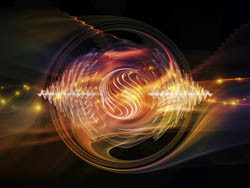Macroscopic objects in the quantum regime
Heralded as a Nature Milestone, cavity optomechanics exploits the interaction between photons and mirrors in table-top experiments. It enables macroscopic objects to be studied in the regime where quantum effects become apparent. It also has exciting practical applications in fields such as sensing and silicon photonics. A common experimental protocol exploits a tiny optical cavity that confines light in all directions, coupled to a mechanical oscillator. Radiation pressure, the pressure exerted on any surface exposed to electromagnetic radiation, can be used to cool a mechanical resonator toward the quantum ground state of motion. This system was the focus of the EU-funded project 'Quantum phenomena in optomechanical systems' (QPOS). All experiments combined passive cryogenic cooling with optical cooling. The team developed a new setup consisting of a silicon nitride nanobeam electromagnetically or, more specifically, evanescently coupled to a silica microdisk resonator. It demonstrated an unprecedented high cooperativity, a measure of coupling strength, which makes possible a number of different experiments. Exploiting this system, the team conducted a long study related to feedback cooling. This is a technique that uses the displacement of the oscillator to apply a force related to it to the oscillator in a feedback loop. Scientists successfully cooled the fundamental mechanical mode of a nanostring to five to 10 phonons, a measure of collective oscillations in condensed matter. The result is currently being prepared as a manuscript. In other experiments, the team demonstrated the significant heating due to optical absorption that must be reduced for a cleaner protocol. They also developed a setup and theoretical calculations to study another source of mechanical losses, phonon scattering and adsorption. It consists of a high-frequency optomechanical resonator with low clamping losses. It will soon be implemented in low-temperature experiments. QPOS had great success in developing innovative setups to investigate optomechanical interactions at the transition from the classical to the quantum regime. Implementation of some of those has already borne fruit with results upcoming in several publications.







